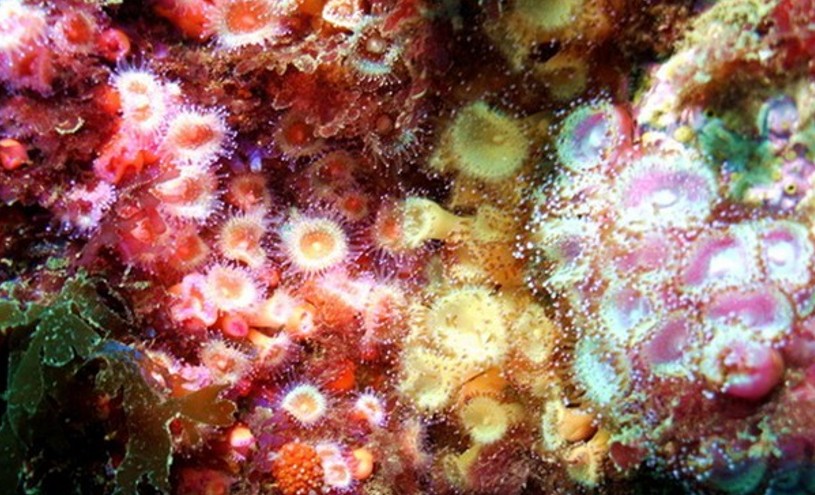The Gemstone Bay Snorkel Trail Hahei
Gemstone Bay is along the track to Cathedral Cove and a great place to snorkel.
Gemstone Bay – Habitat
Located in water 0-5 m deep .
A boulder beach, with representative examples shallow sand flats, rock flats and mixed weed zone below the low water mark.
The boulders, over-hang and guts along the snorkel trail provide habitat for sponges, ascidians, bryozoans and fish (including crayfish) which are more characteristic of deeper communities elsewhere in the reserve.
Gemstone Bay Snorkel Trail - What is it?
Four Buoys with interpretation panels attached. The interpretation panels identify habitat and commonly seen creatures. They include a photo/picture, with a short message attached.The Snorkel trail provides a point of difference to get people into the water so they are able to experience the amazing marine life in the Te Whanganui a Hei Marine Reserve.
The buoys have handles on them which snorkelers are able to hold on to which can help novice snorkelers, tourist and children feel more comfortable in the water. The information panels on the buoys give information about the marine environment. Some parts of the bay have a soft sandy floor. Look for goatfish, trevally and snapper in these areas. On the shallow rocky areas you’ll often see paketi (spotties) and maybe some parore and sweep. Other parts of the bay are dry at low tide and covered by water at high tide. The creatures that live in these ‘intertidal’ zones have to be very adaptable.
You will see two different types of habitat.
The shallower areas support a mixture of seaweeds (like flapjack and paddleweed ) and a wide variety of fish such as banded wrasse, red moki, snapper or blue cod. n the deeper water there are areas of bare rock known as ‘kina barrens’ and ‘anemone zones’.On the outer edges of the bay and beyond an Ecklonia (kelp) forest flourishes in water 6- 10 m deep. In the rocky areas you will also find ‘micro-habitats’ (a room with a room); overhands, crack and crevices that host crayfish and unusual filter feeding animals and sponges that normally occur only in deeper water.






